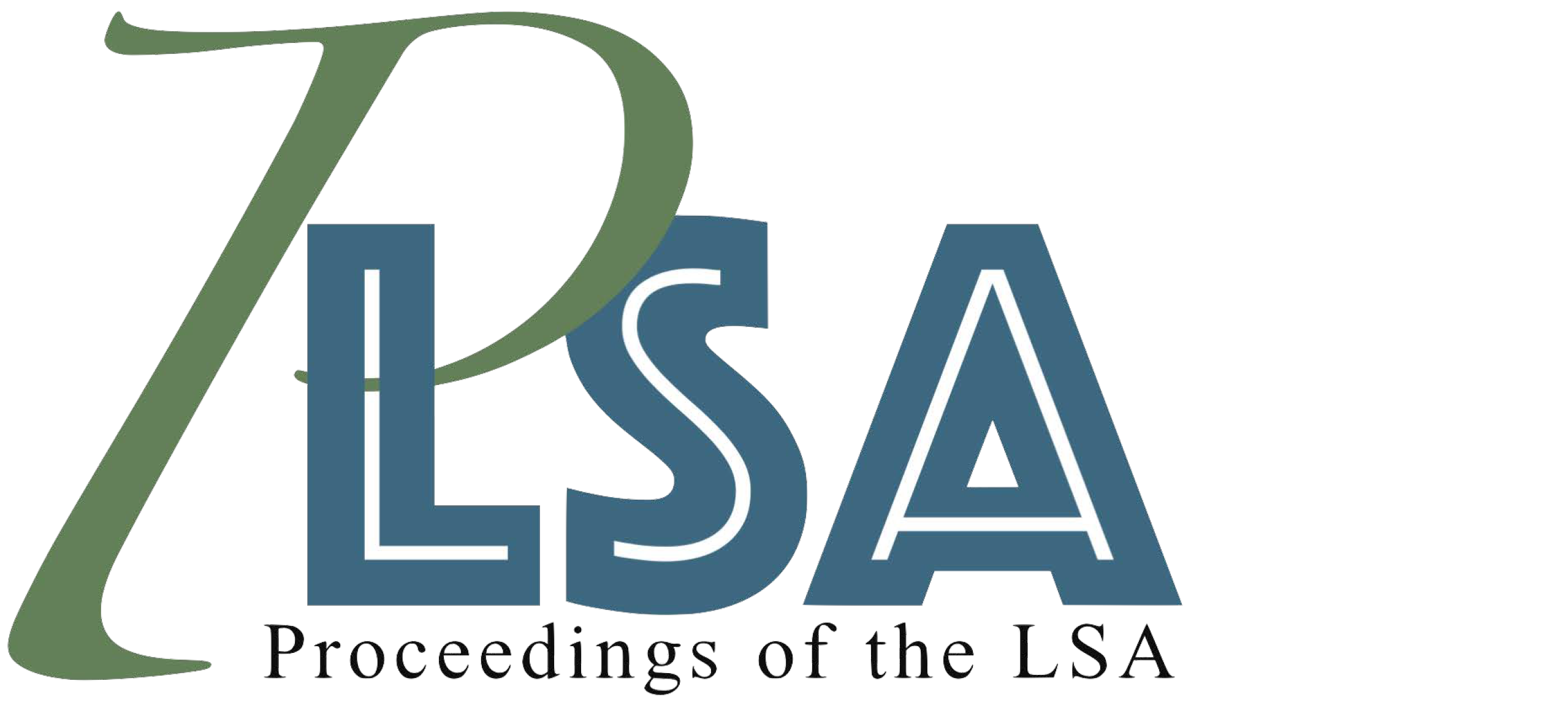Pattern deduction in linguistically attested and unattested grammars
DOI:
https://doi.org/10.3765/plsa.v10i1.5955Keywords:
hierarchical bias in language learning, pattern deduction, artificial language learning, learnabilityAbstract
A popular hypothesis in linguistics posits that language learners are biologically predisposed to learn structures attested in human language – for example, a hierarchically nested phrase structure, while eschewing hypotheses for linguistically unattested structures – for example, one consisting of non-consecutive, linearly alternating “constituents”. The current study explores the robustness of such a predisposition within a controlled artificial language learning task as well as a non-linguistic, general puzzle-solving task. We find evidence that suggests learners more easily acquire linguistically attested hierarchically structured patterns compared to unattested non-hierarchical ones within the non-linguistic task, but not within the language task. We discuss the puzzling nature of this finding, and some work in progress to further unravel the source of this result.
Downloads
Published
Issue
Section
License
Copyright (c) 2025 Sadhwi Srinivas, Kaitlyn Harrigan, Aidan Burnham, Nicholas Voivoda, Berit Wilkins

This work is licensed under a Creative Commons Attribution 4.0 International License.
Published by the LSA with permission of the author(s) under a CC BY 4.0 license.
